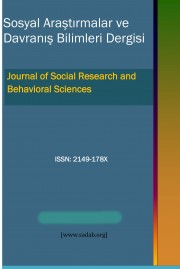İç Kontrol Kapsamındaki Risk Değerlendirmesinde Bulanık Çıkarım Sistemlerinin Kullanımı: Örnek Bir Çalışma
Using Fuzzy Inference Systems for Risk Assessment Within Internal Control and an Example
Author(s): Nurullah Umarusman, Hakan SeldüzSubject(s): Micro-Economics, Methodology and research technology, Accounting - Business Administration
Published by: SD Yayınevi
Keywords: Internal control; risk assessment; fuzzy inference system; Mamdani method;
Summary/Abstract: Internal control concept, that comprises all financial and non-financial activities in a corporation, has gained more importance because of accounting based reasons of 2008-2009 global economic crisis in addition to financial scandals in 1990s. Risk assessment is one of the five elements of internal control. It includes identifying and measurement of risks. It is assumed that identified risk criteria have two components as likelihood of occurrence and severity of effect when occurred. Crisp numeric values for the two components of each risk criteria are obtained through giving points by related individuals on a scoring form. Risk matrixes, which are generated with these inputs, are a commonly used measurement mechanism in risk assessment. However, there are debates about directly assigned crisp numeric values totally based on individual prejudices to inputs which represent risk components would not give realistic and reliable results because risk, as a term, signifies uncertainty. Fuzzy set that is formed by elements which have fuzzy boundaries is a milestone in apprising the concept of uncertainty. Because of its ability to explain the progressive transition from membership to non-membership; it enables uncertainty concepts to be meaningfully identified and measured. Fuzzy inference systems, which are developed on the basis of fuzzy set theory, are therefore appropriate for uncertainties and human behaviors. It renders possible to transform qualitative inputs, which are obtained from linguistic data, into an executable rule-based system. After fuzzy outputs are obtained by using crisp and/or fuzzy inputs, clarification is made in order to define crisp values which will properly represent the fuzzy set. There are many studies in literature which prove appropriateness of fuzzy inference systems for risk assessment activities in different subjects from various engineering fields to finance. The aim of this study is to explore the effectiveness of using fuzzy inference systems in risk assessment activities within the internal control system. In accordance with the purpose and scope of the study, firstly the related literature is reviewed. Then, risk assessment is performed and risk matrixes are formed over an example first with traditional method and later with applying Mamdani Method, which is a well-accepted fuzzy inference system, and the obtained results are compared.
Journal: Sosyal Araştırmalar ve Davranış Bilimleri
- Issue Year: 4/2018
- Issue No: 6
- Page Range: 85-116
- Page Count: 32
- Language: Turkish

